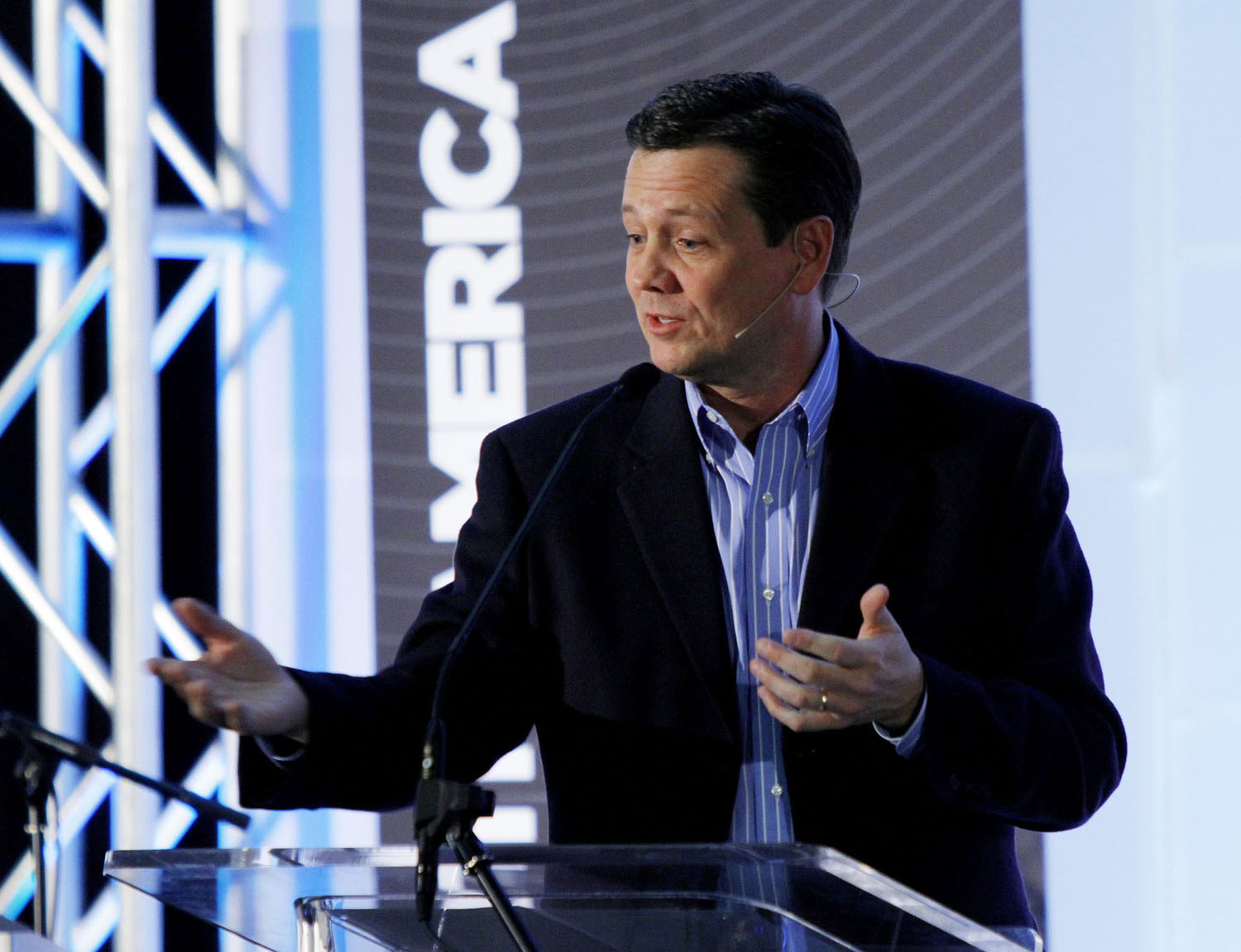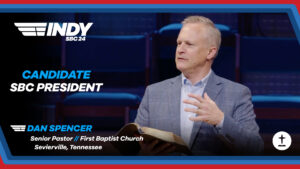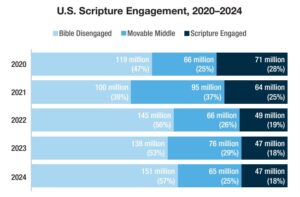
ATLANTA (BP)–“It’s a new day at NAMB,” North American Mission Board President Kevin Ezell said in addressing more than 400 associational directors of missions and church planting missionaries from across North America. “We’re not just moving the deck chairs around.”
Ezell spoke during NAMB’s 2011 Associational Directors of Missions Forum, Feb. 21-23, and the Church Planting Missionary Forum, Feb. 23-25, in Atlanta.
Setting forth NAMB’s new “Send North America” evangelistic church planting strategy, Ezell said the mission board intends to change the conversation on church planting across the Southern Baptist Convention.
“We want to send a message to the SBC that our focus is on church planting and that we’re trying to get our act together,” Ezell said, adding that while church planting is NAMB’s top priority, “it’s not the only thing we do. We are not gutting evangelism. We will continue to do evangelism because you can’t do church planting without evangelism. The purpose of everything we do is to bring people to Christ and penetrate lostness.”
Ezell told the associational and church planting leaders that skepticism and negativity must end among NAMB, some of the 42 state conventions and some of the 1,200 associations.
“We’re too late in the process. People are dying and going to hell. Our resources are less than they once were. We don’t have time to play games. We’ve got to be big boys and girls, get over it and fix it. We cannot let down the next generation by being prideful and insistent on doing things the same way. We’re going to do whatever it takes to get the job done.”
Ezell, himself a former pastor, said since being named NAMB’s president last September, he’s traveled from Boston to Los Angeles — visiting state conventions and associations, and that many state and association staff have visited NAMB.
“I think we can change the conversation,” he said. “Leaders change the conversation. We’re still refining the strategy together. It’s not perfect yet. We just want to send out a clear message about what we are valuing and what we want to promote because we all have to change.”
NAMB’s overarching goal, Ezell said, is to focus first on evangelistic church planting that is infused with evangelism and leadership development. “We want to mobilize and equip thousands of churches — along with the associations and existing church planting networks – to engage in church planting.
“A South Carolina pastor recently told me, ‘My church wants to be involved in planting churches but we don’t know how.’ That’s what we at NAMB want to help them do. As NAMB, the states and as associations, we must begin to think Kingdom-wise to reach North America — not just think about our own church or our local association.”
During his one-hour talk followed by questions and answers, Ezell outlined the five-region structure under which NAMB, the states and the associations will work together.
“We’re not putting little ‘Nambies’ out there or buying buildings. We’re not building a huge bureaucratic infrastructure in the regions,” Ezell said. “It’s not very glamorous.”
The initial 25 cities listed in the Send North America emphasis “will not ultimately be the only cities we focus on” in the five regions, Ezell said. “It’s not a matter of being the 24th city or the 35th city. We just want to mobilize Southern Baptists to plant churches where God leads them. We’re not limited to the 25 cities.”
NAMB also is at work in the area of leadership development, coaching and mentoring, but “we’re not there yet,” Ezell said. “We want to especially do a better job of supporting our bivocational pastors, who work very hard and get very little assistance.”
Addressing the work of associational directors of missions, Ezell said NAMB is creating a new strategic role for ADOMs it jointly funds, a role more highly focused on NAMB’s new Send North America strategy of planting churches, but also one that continues to assist struggling churches. Ezell said some 200 jointly funded ADOMs will see their job title change to “church planting catalyst.”
Effective Jan. 1, 2012, the job description of the church planting catalysts will include:
— Mobilizing existing churches to engage in evangelistic church planting.
— Encouraging churches to engage in evangelistic activity.
— Encouraging and cultivating a pastor/leader skill set among pastors in the associations.
— Personal involvement in planting a church and/or be a member of a church plant. This requirement is optional.
“Just because you don’t feel like you need more churches in your association or state, that doesn’t mean you can’t mobilize your church to plant new churches somewhere else, say, in another state,” Ezell said. “The old scoreboard was about how many churches you planted in your association or state. The new scorecard is about how many churches in your state or association are planting churches in North America. It might be three in Mississippi and 30 somewhere else.”
The jointly funded ADOMs will be given an opportunity to receive training in order to maximize their strengths, equip them for their new role and help them adjust to the new strategy, Ezell said.
For the most part, Marc Bewley, jointly funded director of missions for the Blue Water Baptist Association in Chesterfield, Mich., liked what Ezell had to say.
“I spend 50-60 percent of my time in church planting now,” said Bewley, who has served in his current post the last three years. “I’m a firm believer in church planting and I think it’s great that it’s now NAMB’s No. 1 priority.
“One thing that did concern me is there was a lot of generality in the new job description. I’d like to hear more details. And most of my churches are going to want more details. They’re going to wonder if they’ll be ignored since I’ll be doing even more church planting,” Bewley said.
Bewley said he didn’t disagree with anything Ezell discussed. “I especially liked the part of not having so many hoops (involving NAMB, the Michigan state convention and the local association) to jump through. I really like the new regional set-up, and look forward to working with Steve Davis [who has been named as the region’s vice president].”
Bewley said he believes the Jan. 1, 2012, deadline for launching the new church planting catalyst jobs is a realistic time frame and “more than a generous amount of time to work through the issues.”
Rick Curtis, director of missions for the High Desert Baptist Association in Palmdale, Calif., who comes from a successful business background, gauged Ezell’s plans from a businessman’s perspective.
“If I was an independent business consultant called in to restructure NAMB, it wouldn’t look too different than what Kevin’s put together,” Curtis said.
“I think how the new church planting catalyst job is being structured is good. You have to set a level of expectations. Anybody that has a problem with meeting expectations should be off the NAMB dole anyway. I like it because it puts us all under one vision. We have the option of playing on the team or not,” said Curtis, adding that he’s already “driven 100 percent to plant churches and penetrate lostness.”
In his presentation to the directors of missions and church planting missionaries, Ezell reiterated that NAMB had transitioned 99 people — through a voluntary retirement and downsizing — by the end of December 2010.
“The staff reduction led to a savings of $6 million,” Ezell said. “We cut another $8 million in our internal budget for a total savings of $14 million. Everything we’ve taken away is flowing back into church planting.
“We’re looking at everything at NAMB. We’ve also just reduced NAMB’s travel budget by 50 percent across the board.”
–30–
Mickey Noah writes for the North American Mission Board.














